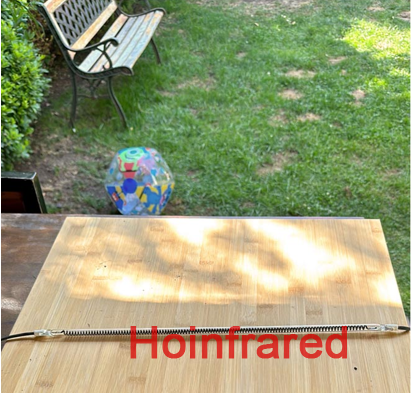
Quartz near-infrared and far-infrared radiation spectra can be generated by using transparent or semi transparent quartz glass as the outer shell of the lamp tube. Infrared is an electromagnetic wave that propagates at the speed of light and carries high energy. The radiation intensity and wavelength of different models of infrared with the same power vary.
Infrared is widely used for industrial heating or drying, such as surface heating, drying, and curing processes in the fields of automobiles, plastics, printing, glass, textiles, food, metal parts, circuit board packaging, film, and electronics.
Infrared can be divided into two categories: near-infrared and far-infrared. Near infrared (also known as shortwave infrared), with a wavelength of 0.76-1.5 microns, penetrates deep into human tissue, about 5-10 millimeters. Far infrared (also known as long wave infrared), with a wavelength of 1.5-400 microns, is mostly absorbed by the surface skin and penetrates tissue at a depth of less than 2 millimeters.
A. Long wave infrared (far-infrared) has the following characteristics: fast heating speed, uniform heating, small thermal inertia, only 1-3 seconds to reach the constant temperature of the component, high electrical radiation conversion efficiency of 60% -75%, no thermal cracking, energy-saving and long service life. Strong penetration ability, able to penetrate low-density materials such as paper, plastic bags, thin metals, etc., but weak penetration ability for high-density materials such as metals, glass, etc.
B. Short wave infrared (near-infrared) has the characteristic of 1-3 seconds of heating and cooling time, making the heating process control more flexible. The single tube and double tube high-efficiency and durable gold-plated reflective layer can achieve a radiation efficiency of over 96% and an ultra long service life, generally over 10000 hours. Especially widely used for drying and curing high-speed printing equipment, it can quickly heat the surface of plastics, water, and other solvents, and has the characteristic of being quickly absorbed by water film to achieve drying effect. Weak penetration ability, but strong penetration ability for high-density substances.
IR ray is a kind of electromagnetic wave. It transmits energy at the speed of light. The energy from the sun mostly transmits by it. In spectral distributions, ......